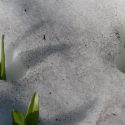Wisconsin boaters, anglers doing more to halt spread of invasives
Wisconsin boaters and anglers seem to be doing a better job of following rules aimed at curbing the spread of aquatic invasive species, according to the results of UW–Madison surveys taken in 2009 and 2010.
Researchers found that 87 percent of boaters and anglers surveyed in 2010 said they removed plants from their boat before leaving the landing, compared to 76 percent in 2009. Removing plants can help prevent the spread of aquatic invasive plants such as Eurasian water milfoil and curly-leaf pondweed to new, uninfected lakes.
The researchers also found more compliance with rules aimed at preventing the spread of diseases such as viral hemorrhagic septicemia and other aquatic invasives. In 2010, 90 percent of anglers drained the water from their boats (up from 81 percent in 2009), while 75 percent did not move live fish (up from 69 percent), and 47 percent did not add water to their bait containers (up from 35 percent).
The increased compliance is related both to boaters’ increased awareness of how invasive species can damage Wisconsin’s fisheries and to their desire to avoid getting a ticket for breaking the law, according to assistant professor Bret Shaw and associate professor Dominque Brossard of the UW–Madison Department of Life Sciences Communication.
While the results suggest that ongoing efforts to educate boaters and anglers about aquatic invasive species are paying off, there is room for improvement, they add.
“It only takes one boater or angler to spread aquatic invasive species,” Brossard points out.
Brossard, Shaw and graduate student Kajsa Dalrymple conducted the surveys of roughly 500 people in partnership with the Wisconsin Department of Natural Resources and UW-Extension.



